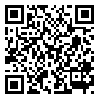1. Atanasov, A.G., Waltenberger, B., Pferschy-Wenzig, E.M., Linder, T., Wawrosch, C., Uhrin, P., Temml, V., Wang, L., Schwaiger, S., Heiss, E.H., Rollinger, J.M., Schuster, D., Breuss, J.M., Bochkov, V., Mihovilovic, M.D., Kopp, B., Bauer, R., Dirsch, V.M. and Stuppner, H. 2015. Discovery and resupply of pharmacologically active plant-derived natural products: A review. - Biotechnol Adv. 33: 1582-1614. [
DOI:10.1016/j.biotechadv.2015.08.001]
2. Bai, Y., Chen, B., Hong, W., Liang, Y., Zhou, M. and Zhou, L. 2016. Sedum sarmentosum bunge extract induces apoptosis and inhibits proliferation in pancreatic cancer cells via the hedgehog signaling pathway. - Oncol. Rep. 35: 2775-2784. [
DOI:10.3892/or.2016.4679]
3. Barranco, S., Townsend, C., Casartelli, C., Macik, B., Broerwinkle, W. and Gourley, W. 1983. Establishment and characterization of an in vitro model system for human adenocarcinoma of the stomach. - Cancer Res. 43: 1703-1709.
4. Huang, D., Zhang, W., Huang, D. and Wu, J. 2010. Antitumor activity of the aqueous extract from sedum sarmentosum bunge in vitro. - Cancer Biother. Radiopharm. 25: 81-88. [
DOI:10.1089/cbr.2009.0632]
5. Jung, H. J., Kang, H. J., Song, Y. S., Park, E. H., Kim, Y. M. and Lim, C. J. 2008. Anti-inflammatory, anti-angiogenic and anti-nociceptive activities of sedum sarmentosum extract. - J. Ethnopharmacol. 116: 138-143. [
DOI:10.1016/j.jep.2007.11.014]
6. Kang, T. H., Pae, H.O., Yoo, J. C., Kim, N.Y., Kim, Y. C., Ko, G.I. and Chung, H.T. 2000. Antiproliferative effects of alkaloids from sedum sarmentosum on murine and human hepatoma cell lines. - J. Ethnopharmacol. 70: 177-182. [
DOI:10.1016/S0378-8741(99)00164-6]
7. Kashyap, D., Mittal, S., Sak, K., Singhal, P. and Tuli, H. S. 2016. Molecular mechanisms of action of quercetin in cancer: recent advances. - Tumour Biol. 37: 12927-12939. [
DOI:10.1007/s13277-016-5184-x]
8. Ma, G., Yang, C., Qu, Y., Wei, H., Zhang, T. and Zhang, N. 2007. The flavonoid component isorhamnetin in vitro inhibits proliferation and induces apoptosis in eca-109 cells. - Chem. Biol. Interact. 167: 153-160. [
DOI:10.1016/j.cbi.2007.02.006]
9. Ma, X., Yang, J., Deng, S., Huang, M., Zheng, S., Xu, S., Cai, J., Yang, X. and Ai, H. 2017. Two new megastigmanes from chinese traditional medicinal plant sedum sarmentosum. - Nat. Prod. Res. 31: 1473-1477. [
DOI:10.1080/14786419.2017.1280493]
10. Meacham, C.E. and Morrison, S.J. 2013. Tumor heterogeneity and cancer cell plasticity. - Nature 501: 328-337. [
DOI:10.1038/nature12624]
11. Nakatsu, N., Yoshida, Y., Yamazaki, K., Nakamura, T., Dan, S., Fukui, Y. and Yamori, T. 2005. Chemosensitivity profile of cancer cell lines and identification of genes determining chemosensitivity by an integrated bioinformatical approach using cdna arrays. - Mol. Cancer Ther. 4: 399-412.
12. Newman, D. J. and Cragg, G. M. 2016. Natural products as sources of new drugs from 1981 to 2014. - J. Nat. Prod. 79: 629-661. [
DOI:10.1021/acs.jnatprod.5b01055]
13. Ouyang, L ., Luo, Y., Tian, M., Zhang, S. Y., Lu, R., Wang, J. H., Kasimu, R. and Li, X. 2014. Plant natural products: from traditional compounds to new emerging drugs in cancer therapy. - Cell Prolif. 47: 506-515. [
DOI:10.1111/cpr.12143]
14. Soule, H., Vasquez, J., Long, A., Albert, S. and Brennan, M. 1973. A human cell line from a pleural effusion derived from a breast carcinoma. - J. Natl. Cancer Inst. 51: 1409-1416. [
DOI:10.1093/jnci/51.5.1409]
15. Srivastava, V., Negi, A. S., Kumar, J. K., Gupta, M. M. and Khanuja, S. P. 2005. Plant-based anticancer molecules: a chemical and biological profile of some important leads. - Bioorg Med. Chem. 13: 5892-5908. [
DOI:10.1016/j.bmc.2005.05.066]
16. Tariq, A., Sadia, S., Pan, K., Ullah, I., Mussarat, S., Sun, F., Abiodun, O. O., Batbaatar, A., Li, Z., Song, D., Xiong, Q., Ullah, R., Khan, S., Basnet, B. B., Kumar, B., Islam, R. and Adnan, M. 2017. A systematic review on ethnomedicines of anti-cancer plants. - Phytother Res. 31: 202-264. [
DOI:10.1002/ptr.5751]
17. WHO. 2014. Global status report on noncommunicable diseases. In: MENDIS, H. (Ed.). Geneva: World Health Organization.
18. Wolbis, M. 1989. Flavonol glycosides from sedum album. - Phytochem. 28: 2187-2189. [
DOI:10.1016/S0031-9422(00)97941-X]
19. Zhou, Y., Zheng, J., Li, Y., Xu, D. P., Li, S., Chen, Y. M. and Li, H.B. 2016. Natural polyphenols for prevention and treatment of cancer. - Nutrients 8: 515. [
DOI:10.3390/nu8080515]









